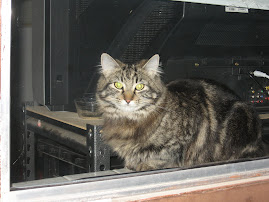 First of all, we really feel like we are melting in this picture. Secondly, it is paradise. It is dreadfully hot, but we see so many people, girls in school uniforms, policemen, young men with tobogans on their heads, walking along as if it is not hot that we pretend like we do not notice the heat either. That is, until we crowd onto the school buses that are used for public transport here and gulp from the rapidly cooling water bottles provided by Peace Corps staff.
First of all, we really feel like we are melting in this picture. Secondly, it is paradise. It is dreadfully hot, but we see so many people, girls in school uniforms, policemen, young men with tobogans on their heads, walking along as if it is not hot that we pretend like we do not notice the heat either. That is, until we crowd onto the school buses that are used for public transport here and gulp from the rapidly cooling water bottles provided by Peace Corps staff.While we have noticed how people carry themselves in this climate and how they dress, the most striking of my first impressions is the different, sometimes unexpected, words that come out of their mouths. Belizeans in general speak at least four or five languages, including English, which is taught in schools and is the official language, Kriol, Spanish, Garifuna, from a people group exiled from St. Vincent, and two Mayan languages called Kekchi and Mopan. Where we have begun training in the capital of Belmopan, the most commonly spoken language in public is Kriol. I am tempted to say, "Buenos dias," when I see a woman who looks like one of the women I knew in Mexico, but she may speak Mayan and is only in the capital to sell produce at the market. Or she may speak Spanish but greet people on the street with, "Maanin," like everyone else.
Kriol is such a lively language. We are receiving a handful of lessons in survival Kriol. It is a lot of fun. Recently, a dictionary was published to standardize the spellings of Kriol words, but largely it is not written, only spoken. One of the instructors who lived in Jamaica before coming here urges us to "step up to it," or "stand up and put some rhythm in it." It is as if it takes all of your powers of expression and body language to do it justice. The following is a poem/song in Kriol on behalf of Peace Corps Belize. You probably need to sound it out audibly to recognize the words.
Gud maanin
We da pees koar
We kom da bileez
Wid wahn speshal goal
Fi shayr wi talens;
Shoa wee da gud nayba
Ahn fu enjai unu food
An unu eksaitin kolcha

Over the weekend, our training group took a field trip to Dangriga for an introduction to Garifuna or Garinagu culture. We visited a museum, where we were told the stories of their ancestors and their combined heritage from Africa, represented by a group that was shipwrecked on St. Vincent and escaped slavery at that time, and from the Orinoco Basin of South America. We saw drum-making and cassava bread-baking demonstrations. We ate snapper in coconut milk soup, bones and eyes and all, and plaintain dumplings. The day was finished with a presentation of traditional dancing, as seen above.











No comments:
Post a Comment